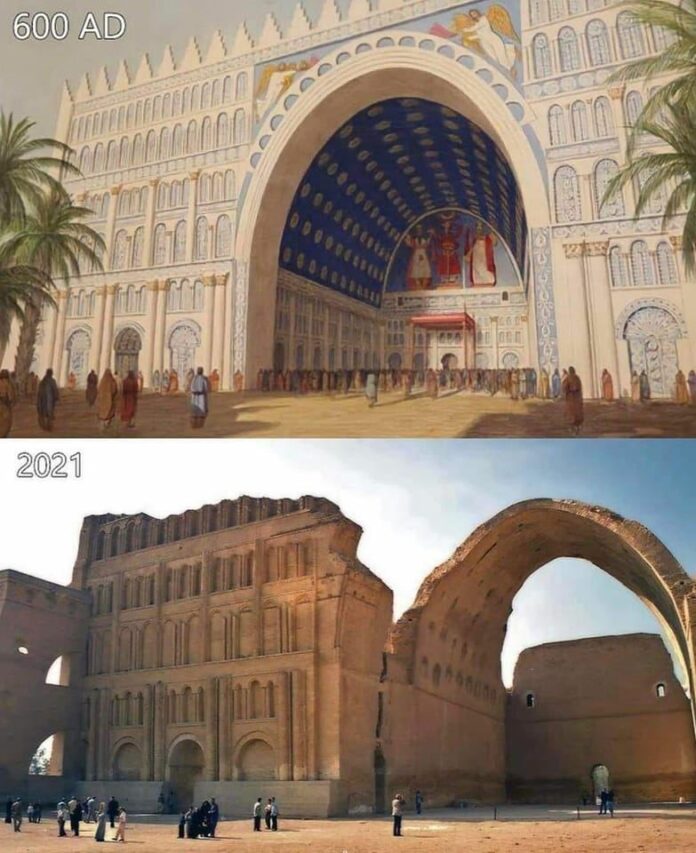The Taq Kasra, also known as the Arch of Ctesiphon, stands as a monumental testament to the grandeur of ancient Persian architecture. Located near the modern town of Salman Pak in Iraq, this historic structure remains a significant symbol of the Sasanian Empire. Despite the ravages of time, conflict, and neglect, the Taq Kasra continues to capture the imagination of historians, architects, and visitors alike. This article delves into the history, architectural marvels, and modern challenges faced by this extraordinary edifice.
Historical Overview

The precise date of the Taq Kasra’s construction remains uncertain. Some historians attribute its creation to Shapur I, who ruled the Sassanian Empire from 242 to 272 AD. Others suggest that its construction may have commenced during the reign of Anushiruwan the Just (Khosrow I) following a campaign against the Byzantines around 540 AD. The arch, characterized by its expansive iwan hall, was a part of the imperial palace complex in Ctesiphon. This grand hall, open on the facade, stood approximately 37 meters high, 26 meters across, and 50 meters long—making it the largest man-made, free-standing vault until modern times.
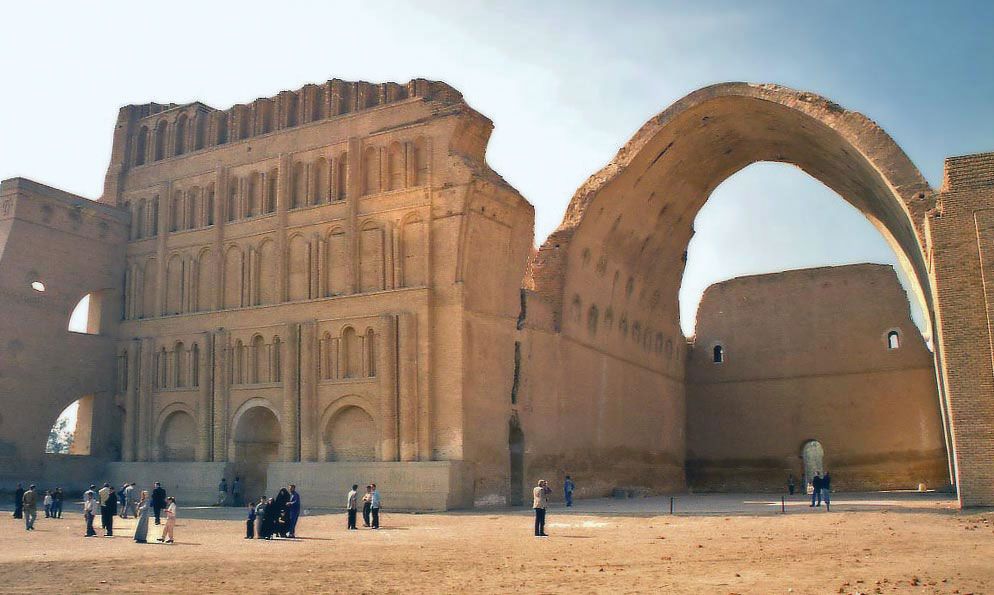
The architectural ingenuity of the Taq Kasra is evident in its construction. The catenary arch was built without centring, utilizing several innovative techniques. The bricks were laid at an angle of about 18 degrees from the vertical, allowing them to be partially supported by the rear wall during construction. Additionally, quick-drying cement mortar enabled the freshly laid bricks to gain support from those previously placed.
Architectural Significance
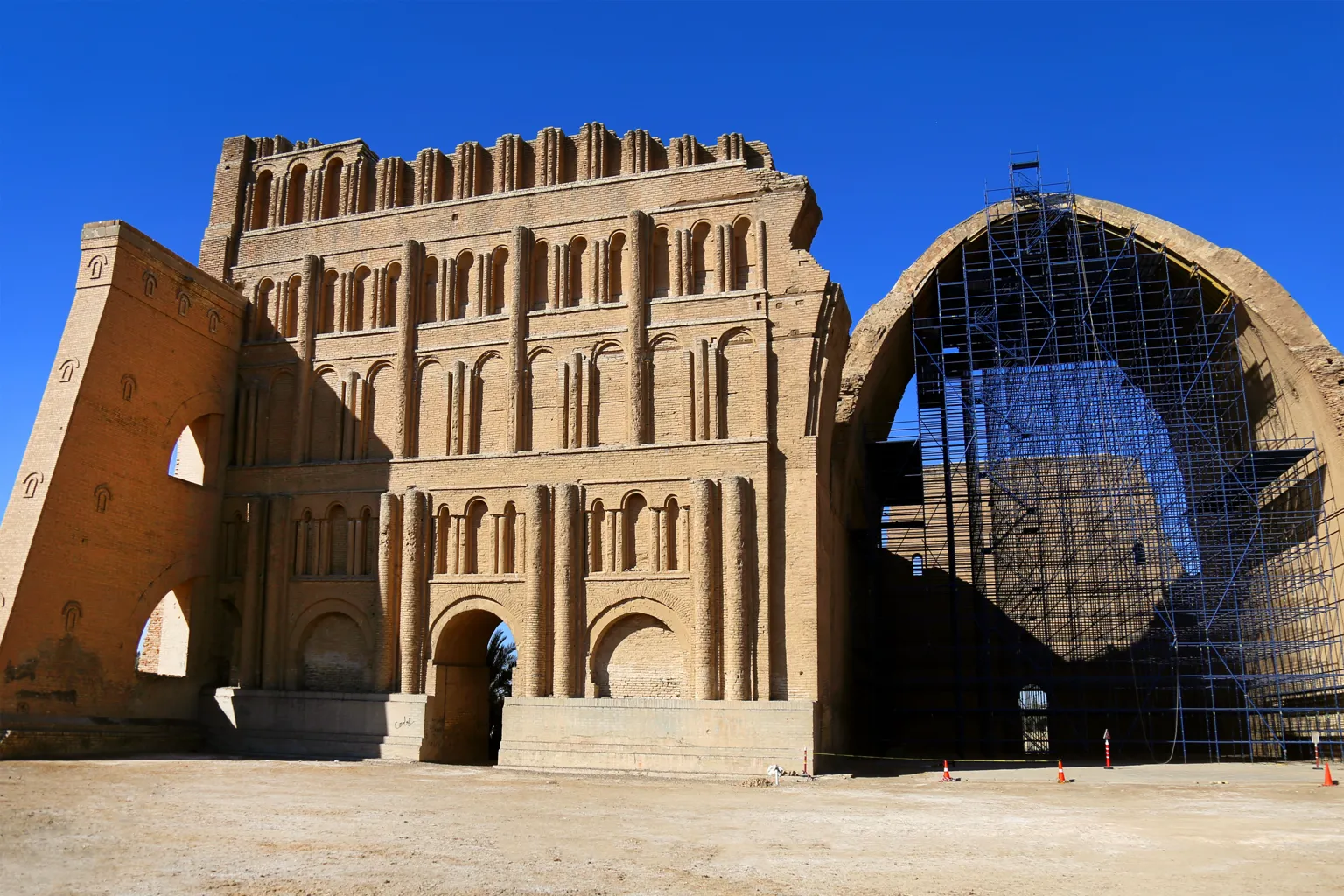
The Taq Kasra remains one of the most significant achievements in ancient architecture. As the largest single-span vault of unreinforced brickwork in the world, it stands second only to the Gavmishan Bridge. The structure’s impressive dimensions and the engineering techniques employed in its construction reflect the advanced capabilities of Sassanian builders. Its thick walls—up to 7 meters at the base—and a top arch thickness of approximately 1 meter further underscore the monument’s grandeur.
Decline and Preservation Efforts
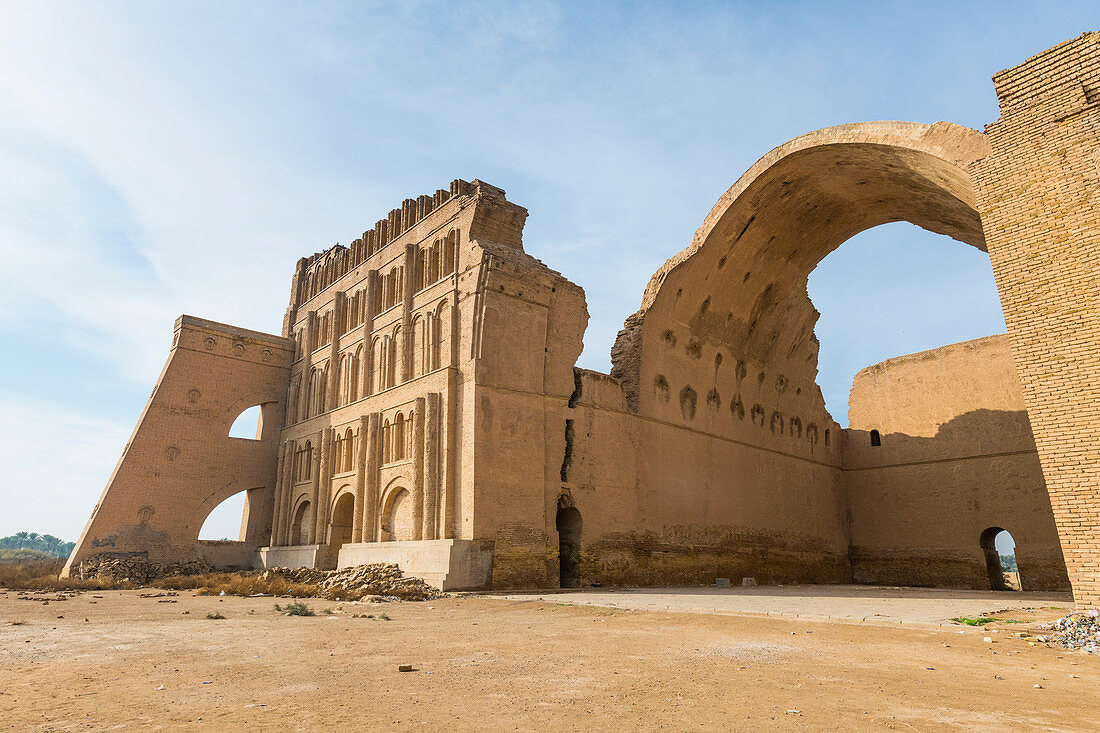
Following the Arab conquest of Persia in 637 AD, the Taq Kasra was briefly used as a mosque before being abandoned. In the early 10th century, the Abbasid caliph al-Muktafi repurposed the ruins for the construction of the Taj Palace in Baghdad. Over the centuries, the monument faced significant deterioration. A devastating flood in 1888 destroyed much of the structure, and during the 1980s, Saddam Hussein’s government undertook partial reconstruction efforts. However, these efforts ceased following the 1991 Persian Gulf War.
In the early 2000s, the Iraqi government, in collaboration with the University of Chicago’s Diyala Project, initiated restoration work, investing approximately $100,000. This restoration was completed in 2017. Unfortunately, on March 7, 2019, a partial collapse further damaged the Taq Kasra, just two years after the latest restoration.
Modern Recognition
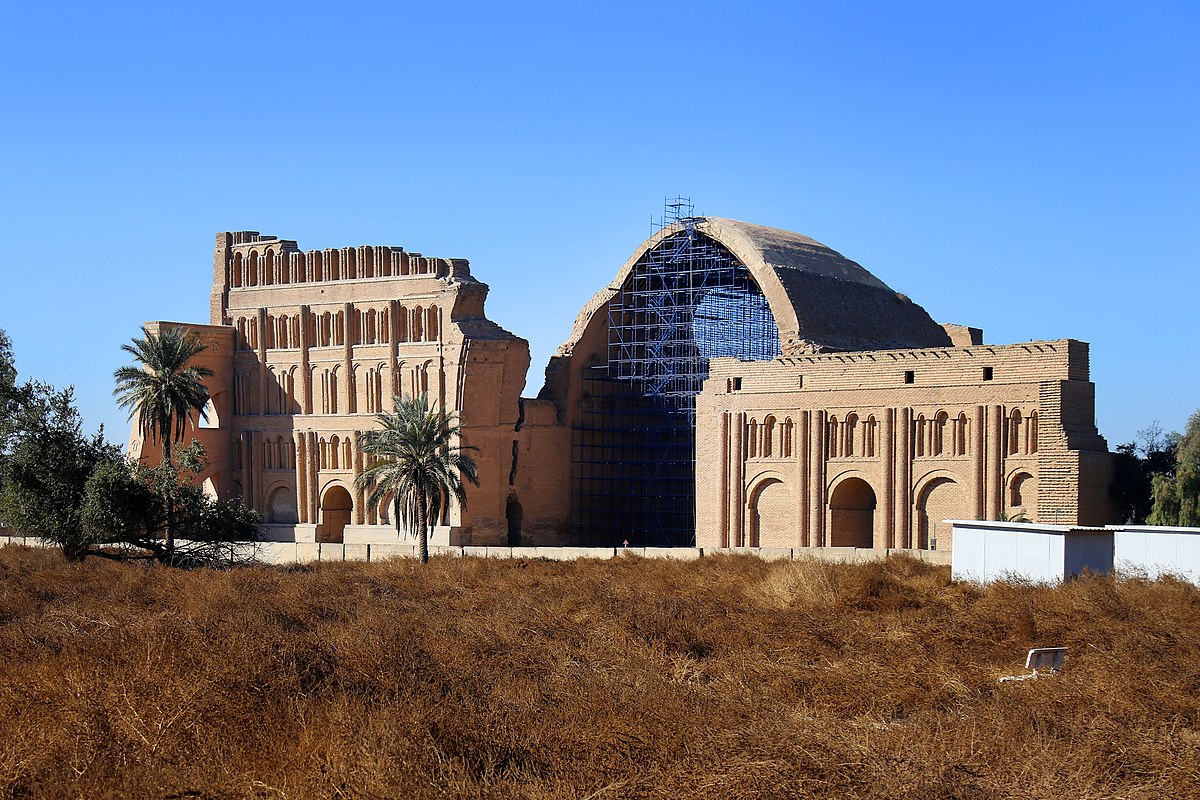
The Taq Kasra has garnered international attention for its historical and architectural significance. In 1940, British writer Roald Dahl, then training as a pilot, took an award-winning photograph of the arch. This photograph, taken with a Zeiss camera, was later auctioned to raise funds for the Roald Dahl Museum and Story Centre.
In recent years, efforts have continued to preserve and restore the Taq Kasra. Iranian Minister of Cultural Heritage Ali Asghar Mounesan announced in January 2021 that approximately $600,000 would be needed for further restoration work. Despite the challenges, the Taq Kasra remains a symbol of ancient Persian architectural prowess and a key piece of world heritage.
Conclusion
The Taq Kasra stands as a monumental reminder of the grandeur of the Sassanian Empire and the advanced architectural techniques of ancient Persia. Its massive, unreinforced brick arch continues to inspire awe and admiration. As preservation efforts persist, the Taq Kasra not only offers a glimpse into a rich historical past but also highlights the ongoing need to protect and celebrate our global cultural heritage.
